The Best Back Squat Workouts for Strength and Muscle
These Back Squat Workouts will significantly develop your strength, power, technique, skill, body and fitness in many different ways.
The Back Squat is one of the most important exercises for any human, and the physiological and psychological benefits that it brings are almost unrivalled by any other exercise.
“There is simply no other exercise, and certainly no machine, that produces the level of central nervous system activity, improved balance and coordination, skeletal loading and bone density enhancement, muscular stimulation and growth, connective tissue stress and strength, psychological demand and toughness, and overall systemic conditioning than the correctly performed full squat.”
– Mark Rippetoe, Starting Strength
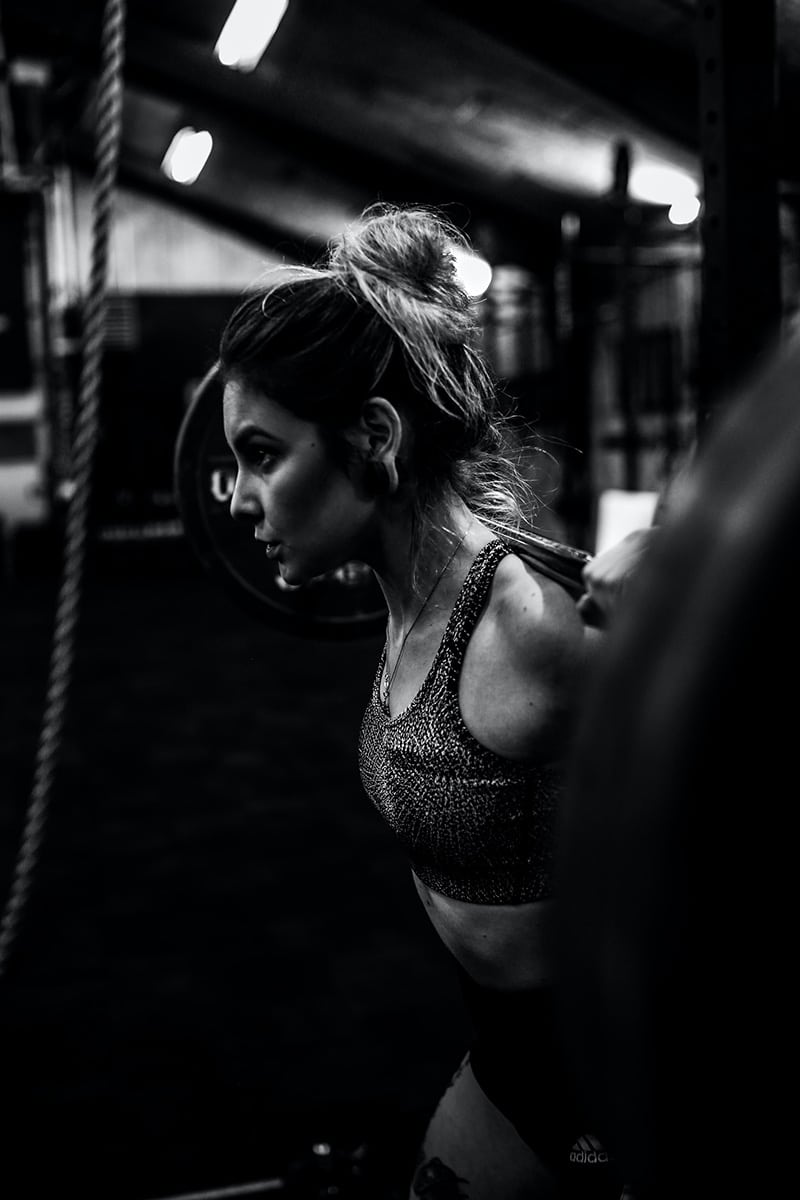
Benefits of Back Squat Workouts
Find out why you need to include more Back Squat Workouts in your training.
Back Squats will Increase your Fitness
Your heart is a muscle. The Back Squat strengthens your muscles, including your heart. It makes it more efficient because any activity takes less effort.
Walking up a flight of stairs or running will place less demand on a stronger heart. This decreases your heart rate and blood pressure over time. In turn increasing your cardiovascular fitness. Squatting is good for your heart.
Back Squats will Help you Gain Strength
Strength is your ability to move your body against an external resistance.
The bar sits on your back when you Squat and gravity pulls it downwards. Your muscles must generate force against gravity to control the bar on the way down and Squat it back up. Increase your Squat and you enhance the strength of your muscles.
This strength carries over to daily life and sports because Squats work the entire whole body.
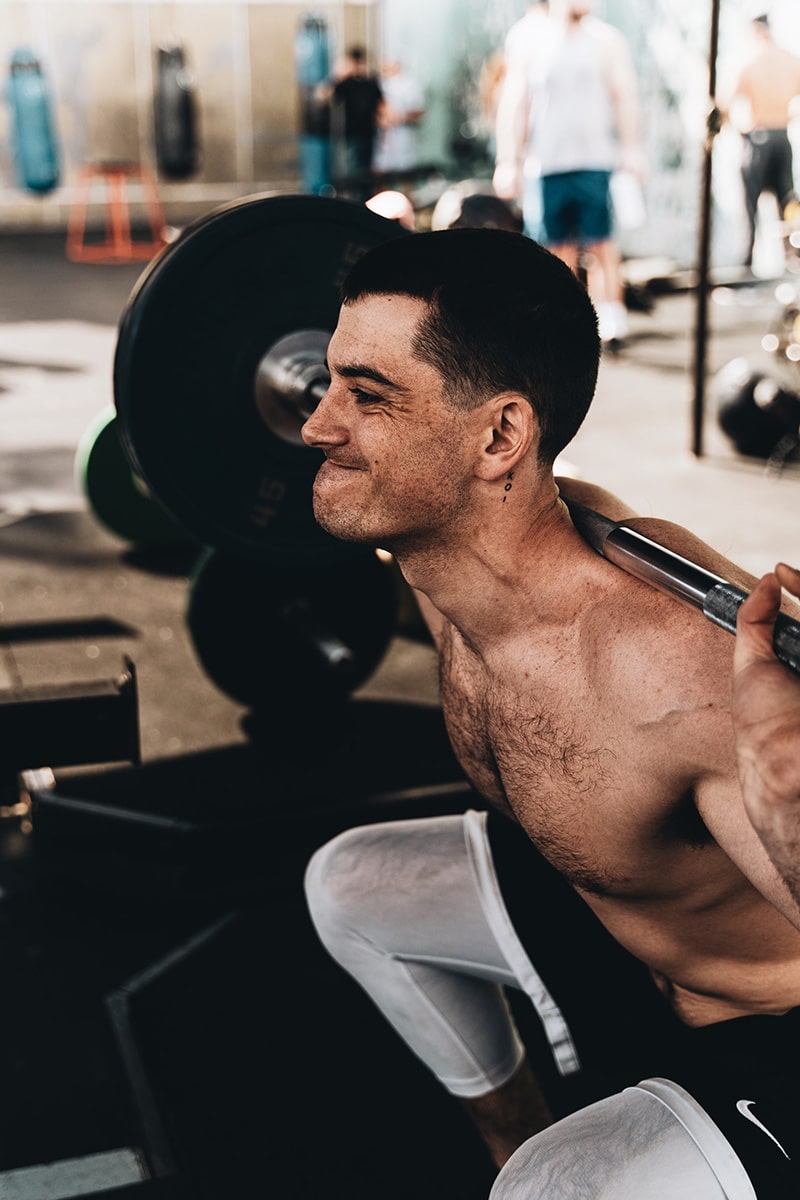
Back Squats Build Muscle
Back Squat Workouts work a huge number of muscles in your body.
Your legs bend, your torso and core stays tight and your upper-body supports the bar. All these muscles work at the same time to balance and Squat the weight correctly. This releases muscle building hormones like testosterone.
The more you improve your Squat and train in the right way, the stronger and bigger your muscles become.
This delays the loss of lean muscle mass (sarcopenia, 2.5kg/decade over 25y on average).
Back Squats Burn Fat
You lose fat when your body burns more energy than you eat. Your muscles burn energy to lift weight. Squats burn more energy than many other exercises because they work more muscles and often utilise heavier weights.
Heavy Squats also increase your metabolism for hours post workout (EPOC). When you combine this with proper nutrition, Squats will help you burn fat and achieve six pack abs (if that is a goal of yours).
What Equipment do I Need for Back Squats?
When it comes to Back Squats you will need a top quality barbell, weights and a squat rack.
If you want to take your home gym or Box to the next level then check out these excellent quality Rigs and Racks from Rogue.
Back Squat Workouts Increase Endurance
Squats strengthen your legs. They make you run faster and further because each step takes less effort. This doesn’t mean you’ll suddenly run a marathon. But a 5k will be easier.
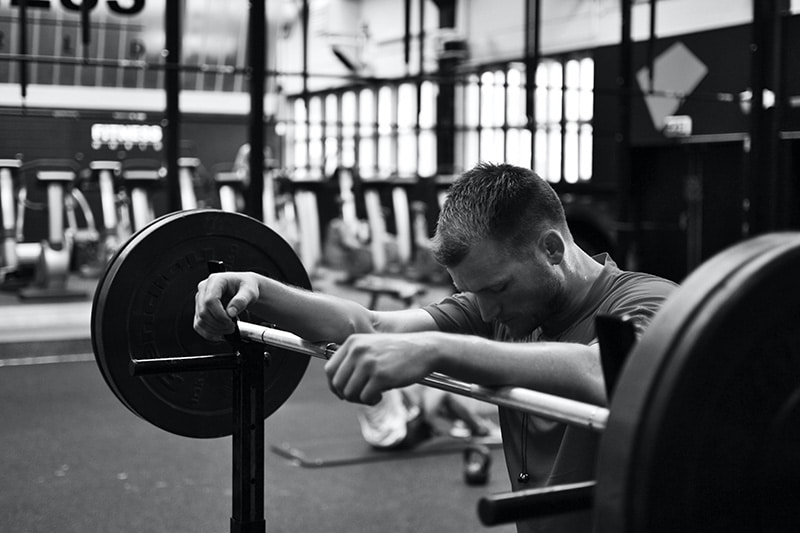
Squats won’t make you slow and bulky. You will gain muscle mass when you double your Squat. But you’ll never gain enough to slow you down. Squatting is more like putting a bigger engine in your car.
Back Squat Workouts Enhance Explosive Power
Explosiveness is your ability to generate force fast. In physics this is power: how much work you can do in a given time (P=W/t).
Stronger legs can do more work in the same amount of time. The more work you can do in the given time, the more power you have. Squats build explosiveness for sports by increasing power. They don’t make you slow for sports, they make you faster.
Improve Balance
Squats train you to balance the bar and load while your body moves.
This improves your balance and coordination. It also increases your ability to feel your body move through space (proprioception). Squats make you better at sports and learning new skills.
They make you less likely to fall when walking up stairs or in the dark. Don’t Squat with machines. Squat free weights so your balance will improve as well.
Build balance in other ways with these Hollow Rocks Workouts
Strengthen Joints
Squats strengthen the muscles around your knee joints, hip joints, ankle joints, spine etc. The movement also strengthens your tendons and connective tissues. This creates support for your joints and spine. It protects them against injuries.
Squats can help you recover from lower back or knee pain. The key is to Squat with proper form so you strengthen your joints instead of stressing them.
Strengthen Bones
Gravity pulls the bar down when you Squat. This compresses everything under the bar. Your bones are living tissues (they heal if they break) which react to this vertical compression by getting stronger.
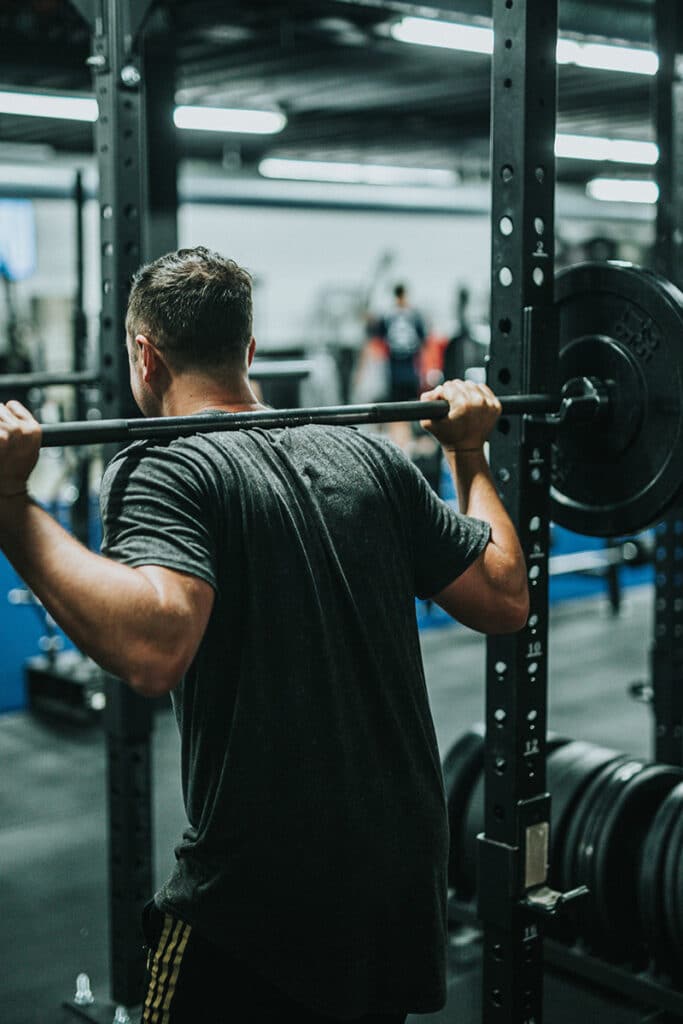
Squats don’t stunt growth. They increase the density of your bones. They make them stronger and less likely to break. This protects you against falls and osteoporosis.
Increase Flexibility
Squats won’t make you inflexible and “muscle-bound”. Most people who Squat for the first time realize they’re inflexible because they haven’t Squatted below parallel for years (or ever).
Squats can’t make you inflexible because you must be flexible to Squat. Squatting each week moves your legs through a full range of motion. This maintains proper hip flexibility which can prevent lower back pain.
Back Squat Workouts Build Discipline
Squats are hard. Doing hard things, even when you don’t feel like it, trains the muscle between your ears: your mind.
This builds discipline and mental fortitude which is crucial to get results in the gym. It also builds discipline that transfers across to other areas of your life. It helps you stick to good nutrition habits, going to bed on time, doing the work, and so on. Squats build discipline.
Back Squat Technique
Squat in the Power Rack for maximum safety. Set the horizontal safety pins so they can catch the bar if you fail to Squat it. Don’t Squat in the smith machine with the bar attached on rails. Machines are ineffective for gaining strength and muscle. And their fixed bar path can injure you.
Squat free weights instead using the Power Rack, Squat Rack or Squat Stands. Here’s how to Squat in five simple steps…
- Setup. Face the bar. Grab it tight with a medium grip. Put it on your upper-back by dipping under the bar. Raise your chest.
- Unrack. Move your feet under the bar. Unrack it by straightening your legs. Step back with straight legs. Lock your hips and knees.
- Squat. Take a big breath, hold it and Squat down. Push your knees out while moving your hips back. Keep your lower back neutral.
- Break Parallel. Squat down until your hips are below your knees. Thighs parallel to the floor isn’t low enough. You must break parallel.
- Squat Up. Break parallel then Squat back up. Keep your knees out and chest up. Lock your hips and knees at the top. Breathe.
BACK SQUAT WARM UP
Make sure you never forget to warm up before you squat.
Back Squat Workouts
Add these into your training.
WORKOUT 1
This workout is designed to test your Back Squat and neuromuscular efficiency.
For Load
- 1 rep max Tempo Back Squat
Rest 10 minutes
Then, Max Reps (1 set) of:
- 30×1 rep max Back Squat (85% of 1RM)
The athlete establishes a back squat 1 rep maximum at a 30X1 tempo, rests 10 minutes, then performs an AMRAP set @30X1 at 85% of the 1 rep maximum for the day.
Select the right Barbell for you.
WORKOUT 2
For Time
- 30 Back Squats (bodyweight)
- 1,000 metre Row
Back squats are from a rack.
WORKOUT 3
AMRAP in 20 minutes
- 14-12-10-8-6-4-2 Back Squats (Bodyweight)
- 2-4-6-8-10-12-14 Strict Pull-Ups
On a 20-minute clock, perform as many rounds and repetitions as possible (AMRAP) of the prescribed work in the order written. Athlete must complete 14 Back Squats and 2 Strict Pull-Ups in the first round. Continue with this pattern, decreasing 2 Back Squats and increasing 2 Strict Pull-Ups every round.
Once the athlete finishes 2 Back Squats and 14 Strict Pull-Ups and there’s more time left on the clock, start again at 14 Back Squats and 2 Strict Pull-Ups.
Score is the total number of rounds and repetitions completed before the 20-minute clock stops.
WORKOUT 4
3 Rounds for Time
- 10 Back Squats (225/155 lb)
- 400 metre Run
Barbell must be pulled from the floor; cannot be on a rack. Scale as needed.
Want to build better abs and a stronger, more functional core? Learn how now.
WORKOUT 5
For Time
- 20 Back Squats (225/155 lb)
- 50 metre Prowler Sprint (180/130 lb)
- 20 Deadlifts (315/225 lb)
- 50 metre Prowler Sprint (180/130 lb)
- 20 Shoulder Presses (135/95 lb)
- 50 metre Prowler Sprint (180/130 lb)
Use three barbells for the back squats, deadlifts, and shoulder (strict) presses. Athlete may take the back squats and presses from a rack.
WORKOUT 6
For Time
Part A
5 Rounds of:
- 10 Bench Presses
- 10 Deadlifts
- 10 Back Squats
Part B
10 Rounds of:
- 500 metre Run (75% max effort)
Rest 3 minutes
With a running clock, as fast as possible perform the prescribed work. In Part A, athlete will perform 5 rounds of 10 Bench Presses, 10 Deadlifts, and 10 Back Squats.
For Part B, Run 500 metres for 10 rounds at 75% max effort and 3-minute rest in between rounds.
Score is the time on the clock when the workout is completed.
Intended Stimulus
Pick a weight that allows you to complete 10 unbroken reps of each exercise with good form. There should be little to no rest between transitions.
Part B consists of 10 running intervals, each 500m long at an intensity of approx. 75%. Try to find a pace that you can maintain for 10 rounds.
Scaling Options
You can scale this workout by decreasing part a) from 5 to 3 rounds and part b) from 10 to 5 rounds.
WORKOUT 7
For Time
- 21 Back Squats (225/155 lb)
- 15 Front Squats (205/145 lb)
- 9 Overhead Squats (185/135 lb)
Use one barbell, from the ground (no rack). Athlete must change loads.
Scaling Options
Intermediate
For Time
- 21 Back Squats (185/135 lb)
- 15 Front Squats (155/105 lb)
- 9 Overhead Squats (135/95 lb)
Beginner
For Time
- 21 Back Squats (135/95 lb)
- 15 Front Squats (115/85 lb)
- 9 Overhead Squats (95/65 lb)
BACK SQUAT WORKOUTS – 8
For Time
- 30 Overhead Squats (95/65 lb)
- 30 Thrusters (95/65 lb)
- 30 Back Squats (95/65 lb)
- 30 Power Cleans (95/65 lb)
- 30 Push Jerks (95/65 lb)
With a running clock, as fast as possible perform the prescribed work in the order written. Try to perform each movement without breaking each lift into more than 2 sets.
Score is the time on the clock when the last Push Jerk is completed.
Scaling
Use 2 Dumbbells at 50/35 lb or 2 Kettlebells at 32/24 kg. If only 1 Dumbbell or Kettlebell is available, increase the reps to 45 and use alternating hands as needed.
WORKOUT 9
21-15-9 Reps for Time of:
- Pull-Ups
- Ring Dips
- Back Squats (135/95 lb)
- Start each round with a 600 metre Run
Perform back squats from a rack.
Build solid leg strength with the Wall Sit
WORKOUT 10
With a Running Clock for Load and Time
10-8-6-4-2 reps of:
- Back Squats (increase weight each round)
Directly into, 30-20-10 reps of:*
- Burpees
- Alternating Lunges
- V-Ups
*Time Cap: 20 minutes
The Workout consists of 2 parts to be completed one after another.
In the first part, for load and for time, start with 10 Back Squats and reduce the reps by 2 each round. While you decrease in reps, you should increase the weight for each round.
The second part, a bodyweight workout, includes Burpees, Lunges, and V-Ups. Start with 30 reps per exercise (30 Burpees, 30 Lunges, 30 V-Ups), then 20 reps per exercise, then 10 reps per exercise. The time cap for the second part is 20 minutes.
There will be two scores for this workout. Score A is the heaviest load successfully lifted (also note the time on the clock to finish) in the 5 rounds of Back Squats. Score B is the time it takes to complete the second part of the workout.
Scaling Options
Beginners can reduce by half the number of repetitions of the first and second parts of the workout.
WORKOUT 11
With an empty barbell:
- 25 strict press
- 50 overhead squat
- 100 back squat
- 50 overhead squat
- 25 strict press
WORKOUT 12
AMRAP in 20 minutes
- 5 Deadlifts (115/75 lb)
- 5 Hang Power Cleans (115/75 lb)
- 5 Front Squats (115/75 lb)
- 5 Push Press (115/75 lb)
- 5 Back Squat (115/75 lb)
On a 20-minute clock, as many rounds and repetitions as possible (AMRAP) perform the prescribed work in the order written.
Score is the total number of rounds and repetitions completed before the 20-minute clock stops.
Build leg endurance with the Rogue Echo Bike
BACK SQUAT WORKOUTS – 13
For Time
- 10 Bear Complexes (135/95 lb)
- 100 yard Bear Crawl
- 8 Bear Complexes (155/105 lb)
- 100 yard Bear Crawl
- 6 Bear Complexes (185/125 lb)
- 100 yard Bear Crawl
- 4 Bear Complexes (205/135 lb)
- 100 yard Bear Crawl
- 2 Bear Complexes (225/145 lb)
- 100 yard Bear Crawl
1 bear complex consists of: 1 Clean, 1 Front Squat, 1 Push Press, 1 Back Squat, and 1 Push Press
Complete the reps for time. This may be done CrossFit-style, where thrusters and squat cleans are allowed.
However, as the rounds go on and the athlete becomes fatigued, they may need to break up the movements (ie pausing at the top of the clean/front squat before attempting the push press), which is also acceptable.
Scaling
Intermediate: Reduce all weights by 10-20 lbs.
Beginner: Reduce the weight by 30-60 lbs. Decrease the distance on the bear crawl to 40-50 yards.
BACK SQUAT WORKOUTS – 14
6 Rounds for Time
- 5 Sets Bear Complex with Sand Bag (80/40lb)
- 3 Bar Muscle-Ups
- 1 Rope Climb 15ft
Score is the time to complete the 6 rounds.
The sand bag is used for this workout, each set performing the legendary Bear Complex (power clean, front squat, push press, back squat and push press). On completion of the 5 sets, this is followed by 3 bar muscle-ups and a rope climb.
Tips and Strategy
The sandbag movements should not feel too heavy in your arms allowing the athlete to perform each round unbroken during the bear complex. Same for the bar muscle-ups, these should be performed unbroken.
The rope climb can be performed legless or with the classic leg climb, whichever is the fastest way for the athlete.
Back Squat Workouts Scaling Options
Choose a lighter sandbag weight which will allow you to still complete the 5 sets unbroken, add in resistance bands to perform the muscle-ups. For the rope climbs, if needed, try to climb up half way.
WORKOUT 15
9 Rope Climbs
- 25 Toes to Bar
- 30 Back Squats 225/155
- 25 Toes to Bar
- 9 Rope Climbs
SCALING: 185/135 and 18 Strict Pull Ups in replace of rope climbs. Back Squats can be taken from a rack.
BACK SQUAT WORKOUTS – 16
For Time
From 0:00-13:00, perform:
- 54 Back Squats (135/95 lb)
- 100 metre Sprint*
*Each time you rack/drop the weight, perform the sprint as a penalty.
Rest 2 minutes
Then, 6 Rounds of:
- 4 Power Cleans (135/95 lb)
- 8 Strict Wide Grip Pull-Ups
- 14 Slam Ball Burpees (30/20 lb)
- 100 metre Sprint
Cash-Out:
- 30 Deadlifts (135/95 lb)
Section 1 is a 13-minute running clock. If completed before 13 minutes then rest until 13:00 is up. Rest 2 minutes then begin a running clock will be started “for time section.”
WORKOUT 17
4 Rounds for Time
- 8 Back Squats (1.25x BW*)
- 800m Run
Take the Barbell from the Floor Steinborn-style or clean it to the back rack. Using a squat rack is scaling.
Scaling Levels: L2: BW, L1: .75 BW
BW stands for bodyweight.
BACK SQUAT WORKOUTS – 18
For Time
- 50 Bag Facing Burpees (70/50 lb)
- 400 metre Burden Run (70/50 lb)
Then, 10 rounds of:
- 3 Push-Up Bag Drags (70/50 lb)
- 4 Sumo Deadlift High-Pulls (70/50 lb)
- 5 Front Squats (70/50 lb)
- 800 metre Burden Run (70/50 lb)
Then, 1-2-3-4-5-6-7-8-9-10 reps of:
- Bear Complexes (70/50 lb)
- Brute Force Burpees
- 400 metre Burden Run (70/50 lb)
- 50 Lateral Burpees
Use one sandbag throughout.
Each “bear complex” (with a sandbag) for this workout consists of: 1 squat clean, 1 shoulder-to-overhead, 1 back squat, and 1 shoulder-to-overhead.
A “brute force burpee” involves a burpee onto a sandbag and then raising the sandbag from the ground to overhead in a single movement. See: brute force burpee demo.
A “push-up bag drag” involves a push-up next to your sandbag and at the top of the push-up, grabbing and pulling the sandbag from one side of your body to the other side. See: push-up bag drag demo.
Best shoulder movements to try.
Back Squat Workouts Scaling Options
Option 1:
- 25 Bag Facing Burpees
- 400 metre Burden Run
Then, 5 rounds of:
- 3 Push-Ups Bag Drags
- 4 Sumo Deadlift High-Pulls
- 5 Front Squats
- 800 metre Burden Run
Then, 1-2-3-4-5-6-7-8-9-10 reps of:
- Bear Complexes
- Brute Force Burpees
- 400 metre Burden Run
- 25 Lateral Burpees
You choose the weight.
Option 2:
- 15 Bag Facing Burpees
- 400 metre Burden Run
Then, 3 rounds of:
- 3 Push-Ups Bag Drags
- 4 Sumo Deadlift High-Pulls
- 5 Front Squats
- 800 metre Burden Run
Then, 1-2-3-4-5 reps of:
- Bear Complexes
- Brute Force Burpees
- 400 metre Burden Run
- 15 Lateral Burpees
You choose the weight.
Kids’ Option:
- 10 Bag Facing Burpees
- 400 metre Burden Run
- 10 Push-Ups Bag Drags
- 10 Sumo Deadlift High-Pulls
- 10 Front Squats
- 800 metre Burden Run
Then, 1-2-3-4-5 reps of:
- Bear Complexes
- Brute Force Burpees
- 400 metre Burden Run
- 10 Lateral Burpees
Scale burden run distance as needed. You choose the weight.
WORKOUT 19
For Time
- 25 Back Squats
- 25 Front Squats
- 25 Overhead Squats
- 400 metre Run
- 25 Shoulder Presses
- 25 Push Presses
- 25 Push Jerks
- 400 metre Run
- 50 Hang Cleans
- 400 metre Run
- 50 Snatches
- 400 metre Run
Perform all movements except the run with a PVC pipe (or broomstick).
Best arm exercises.
With a running clock, as fast as possible perform the prescribed work in the order written. Use a PVC pipe (or broomstick) throughout the workout.
Score is the time on the clock when the last set of 400 metre Run is completed.
BACK SQUAT WORKOUTS – 20
For Time
- 200 metre Farmers Walk (2×50/35 lb)
- 100 Pull-Ups
- 100 Thrusters (45/35 lb)
- 200 metre Sandbag Carry (70/50 lb)
- 75 Burpees
- 75 Hang Power Snatch (45/35 lb)
- 200 metre Suitcase Walk (50/35 lb)
- 50 Kettlebell Swings (1.5/1 pood)
- 50 Bear Complexes (45/35 lb)
- 200 metre Waiter Walk (2×50/35 lb)
- 25 Muscle-Ups
- 25 Handstand Push-Ups
1 Bear Complex consists of 1 Power Clean, 1 Front Squat, 1 Push Press, 1 Back Squat, 1 Push Press – unbroken.
Athletes pick their own weights for the carries (Farmers Walk, Sandbag Carry, Suitcase Walk, Waiter Walk). But the prescribed weights above are based loosely on the weights some users shared in the original forum thread.
With a running clock, as fast as possible complete the prescribed work in the order written.
Score is the time on the clock when the Handstand Push-Ups are completed.
Movement Standards
Suitcase Walk: This is similar to Farmer’s Carry wherein the athlete carries the Dumbbell on one hand and walk the prescribed distance.
Waiter Walk: This carry involves holding two Dumbbells overhead similar to carrying trays like a waiter. While keeping the Dumbbells overhead, walk the prescribed distance.
Use these back exercises to further improve your fitness.

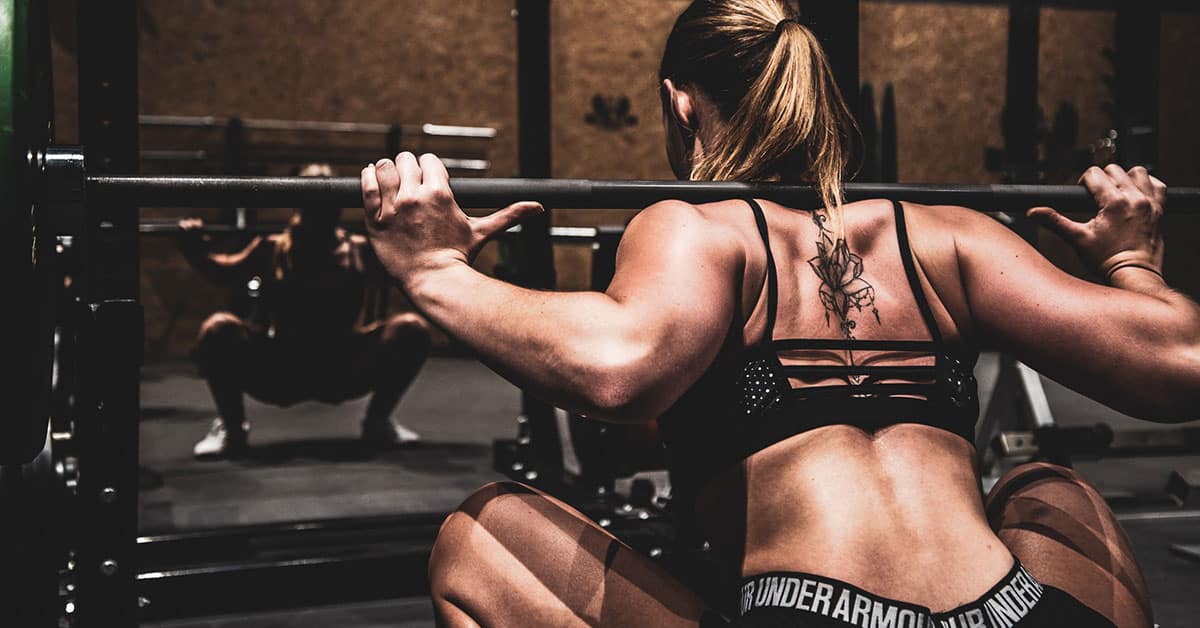
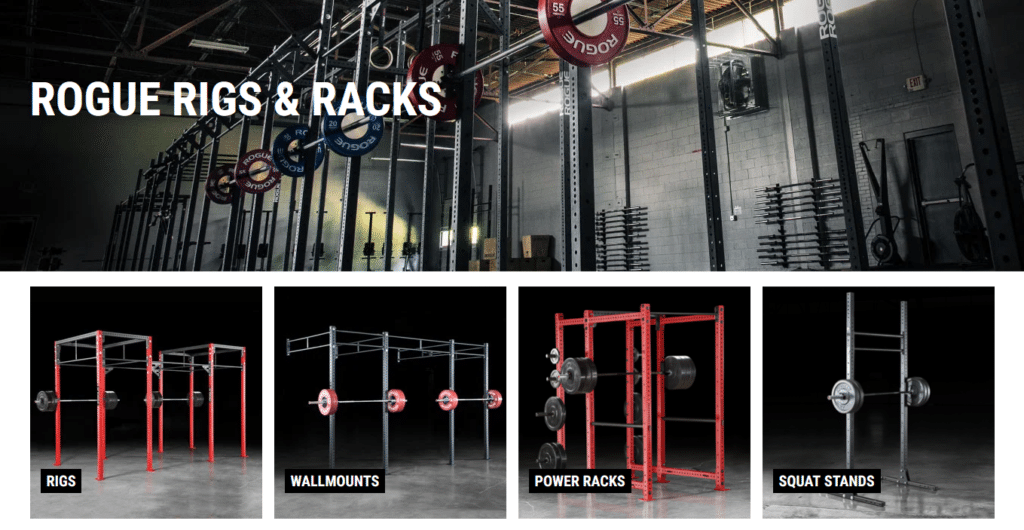
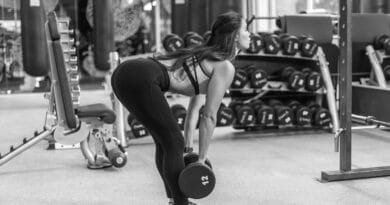

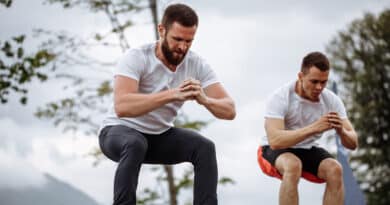
Comments are closed.